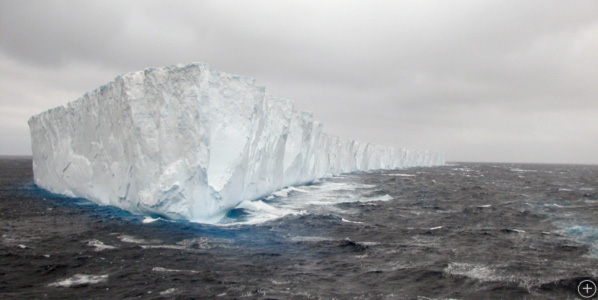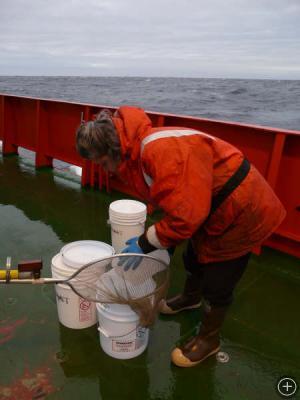
Antarctica’s Floating Ecosystems: Icebergs, Phytoplankton, and Marine Communities

Maria Vernet and her colleagues have found that animals and phytoplankton congregate around free-floating icebergs such as this one, named SS-1, in the Southern Ocean.
From March 6 to April 15, 2009, biological oceanographer Maria Vernet was on board the Nathaniel B. Palmer icebreaker in the northwest Weddell Sea, where she and other scientists studied the free-floating icebergs that break off from several of the Antarctic ice shelves. As these icebergs melt, they appear to spread nutrients and elements (including iron, which stimulates phytoplankton growth) into the sea. As a result, thriving ecosystems made up of phytoplankton, krill, fish, and seabirds surround these icebergs.
Maria and a team of scientists first studied these icebergs and their surrounding marine life in 2005. Maria was surprised to discover that algae could attach to the walls of an iceberg. Tiny tufts of algae covered the iceberg for tens of meters underneath the surface. At the time, Maria and her colleagues didn’t have the right equipment for studying this new community. Although they tried again with a ROV (remotely operated vehicle) in June 2008, it was lost during a dive. On this trip, they returned with new and improved underwater and lab equipment. Armed with these new tools, Maria hopes to better understand the role of phytoplankton in this flourishing iceberg ecosystem.








